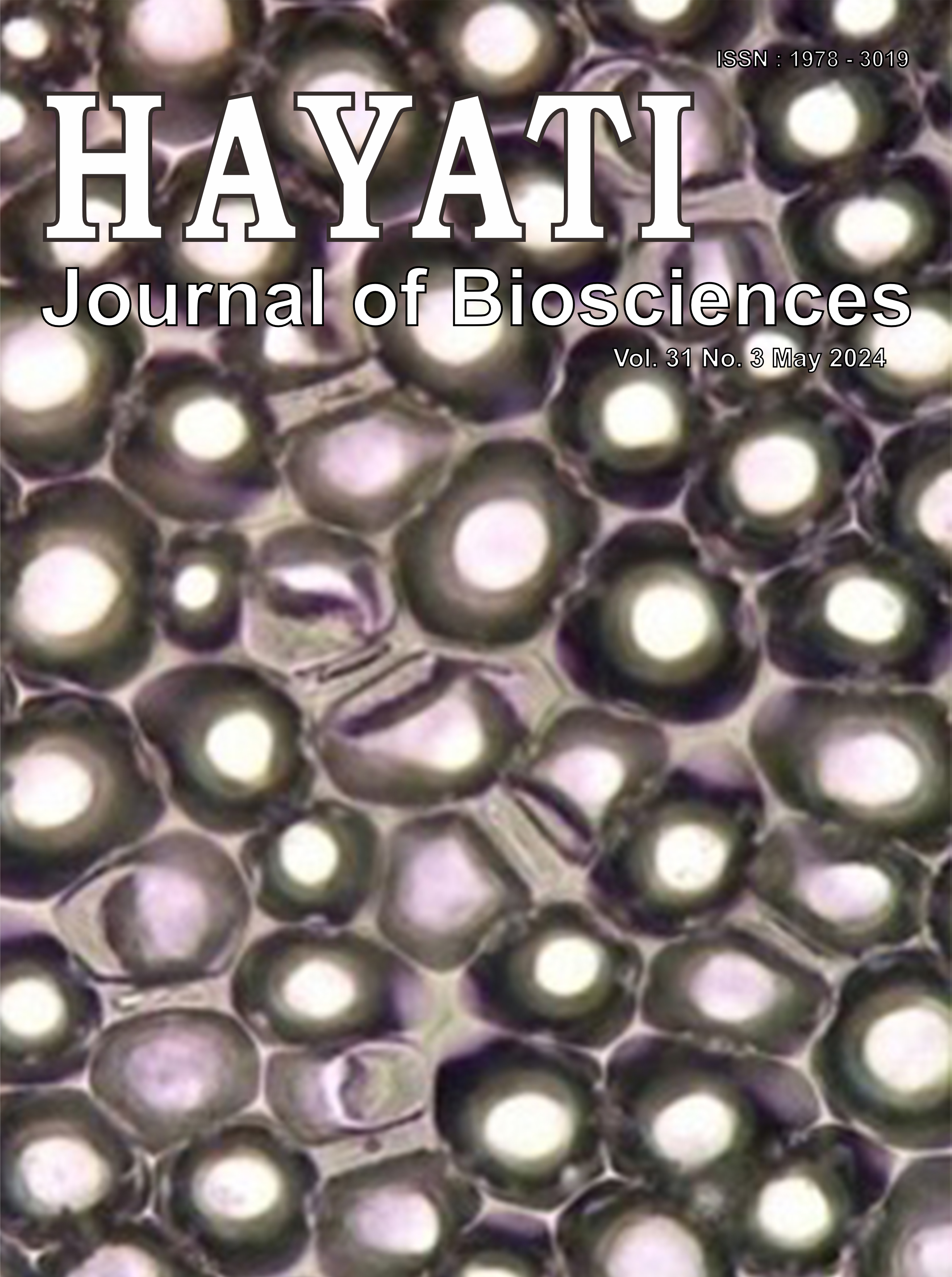Isolation of Endophytic Fungi from Rui (Harrisonia perforata (Blanco) Merr.) and Determining Their Antibacterial, Antioxidant, and Cytotoxic Activity
Abstract
Endophytic fungi produce bioactive metabolites that exhibit antibacterial, antioxidant, and anti-cancer activity. Rui (Harrisonia perforata (Blanco) Merr.) is a traditional medicinal plant proven to be an antibacterial and anticancer. Endophytic fungi live in plant tissues without damaging or producing chemicals that infect the host cell. Endophytes produce the same and similar compound as an original plant. This study aimed to isolate the endophytic fungi from Rui and determine their antibacterial, antioxidant, and cytotoxic activity. 13 fungal isolates were successfully isolated using PDA for seven days at 30°C. Molecular identification using the ITS1 and ITS4 DNA sequences only revealed six species: Diaporthe sp., Phomopsis sp., Aspergillus tubingensis, Aspergillus viridinutans, Pseudofusicoccum sp., and Daldinia eschscholtz. Seven isolates showed antibacterial activity based on plate assay. Aspergillus tubingensis and RA-1 exhibited antibacterial activity against Staphylococcus aureus and Salmonella typhi, with the MIC and MBC starting from 24 to 32 mg/ml. The DPPH assay showed the most increased antioxidant activity in Daldinia eschscholtzii with an IC50 of 98.14±2.39 µg/ml. The Brine Shrimp Lethality Test (BSLT) showed the highest potential cytotoxic activity, as shown by Aspergillus tubingensis and Phomopsis sp. with LC50 of 7.78±7.48 and 30.83±0.39 µg/ml. In conclusion, our study demonstrates that the fungal extract from Rui could be a source of antibacterial, antioxidant, and cytotoxic agents.
Downloads
Copyright (c) 2024 Syariful Anam, Armini Syamsidi, Muh. Fadil Usman Tunreng, Helena Fransisca Djaleha, Windhy Nur Arisca, Gunawan Syaputra, Iklima, Meri Feki Indriani, Agustinus Widodo, Ritha Pratiwi, Yuliet, Abd. Rahman Razak

This work is licensed under a Creative Commons Attribution-NonCommercial 4.0 International License.
HAYATI J Biosci is an open access journal and the article's license is CC-BY-NC. This license lets others distribute, remix, tweak, and build upon author's work, as long as they credit the original creation. Authors retain copyright and grant the journal/publisher non exclusive publishing rights with the work simultaneously licensed under a https://creativecommons.org/

























.png) IPB University
IPB University Department of Biology
Department of Biology The Indonesian Biological Society
The Indonesian Biological Society 

